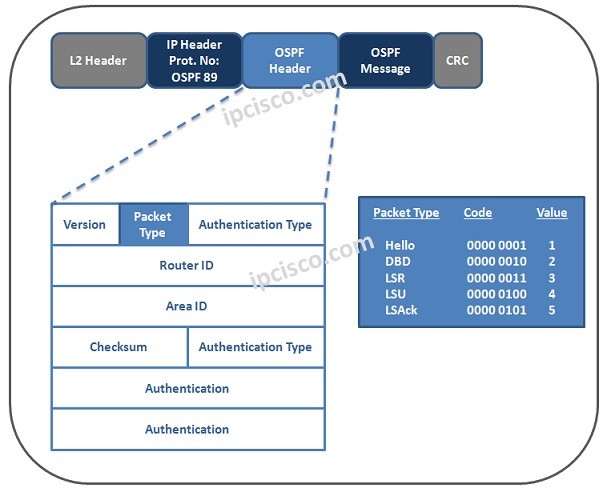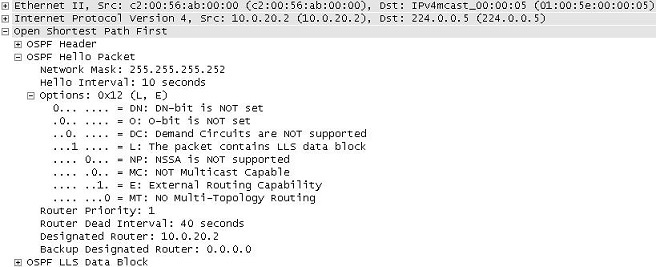- COURSES
- SPECIALS
- BLOG
- MEMBERS
- SHOP
- ABOUT
- ENROLL HERE

Open Shortest Path First use OSPF Packets to communicate and establish OSPF Operation. There are different OSPF Packet Types and in this lesson, we will focus on these OSPF Packet Types. We will explain each Packet and see the duty of this packet.
In almost, every technical job interview, OSPF Packet Types are asked. So, it is also important for your interviews.
There are 5 types of OSPF Packets. These Packet Types are :
You can also check OSPF Adjacency and Neighbourship States
These OSPF Packet Types are mentined in the “Packet Type” area of OSPF Header.
In OSPF Header, the following packet types are mentioned with the above numbers in the message type field. Now, let’s learn each of these packets with the screenshots of Wireshark Packet Analyzer.

Table of Contents
OSPF Hello Packet is used between directly connected neighbours for Neighbour Establishment.
You can check the below OSPF Hello Packet capture to see a real life example of this Packet.

You can also learn Cisco OSPF Configuration
OSPF Database Description (DBD) Packet is a set of LSAs belonging to the topology and their Router ID. Here, when a newer LSA is seen then, it is requested with an LSR(Link State Request).
You can check the below OSPF DD Packet capture to see a real life example of Database Description Packet.
You can also check other CCNP lessons
